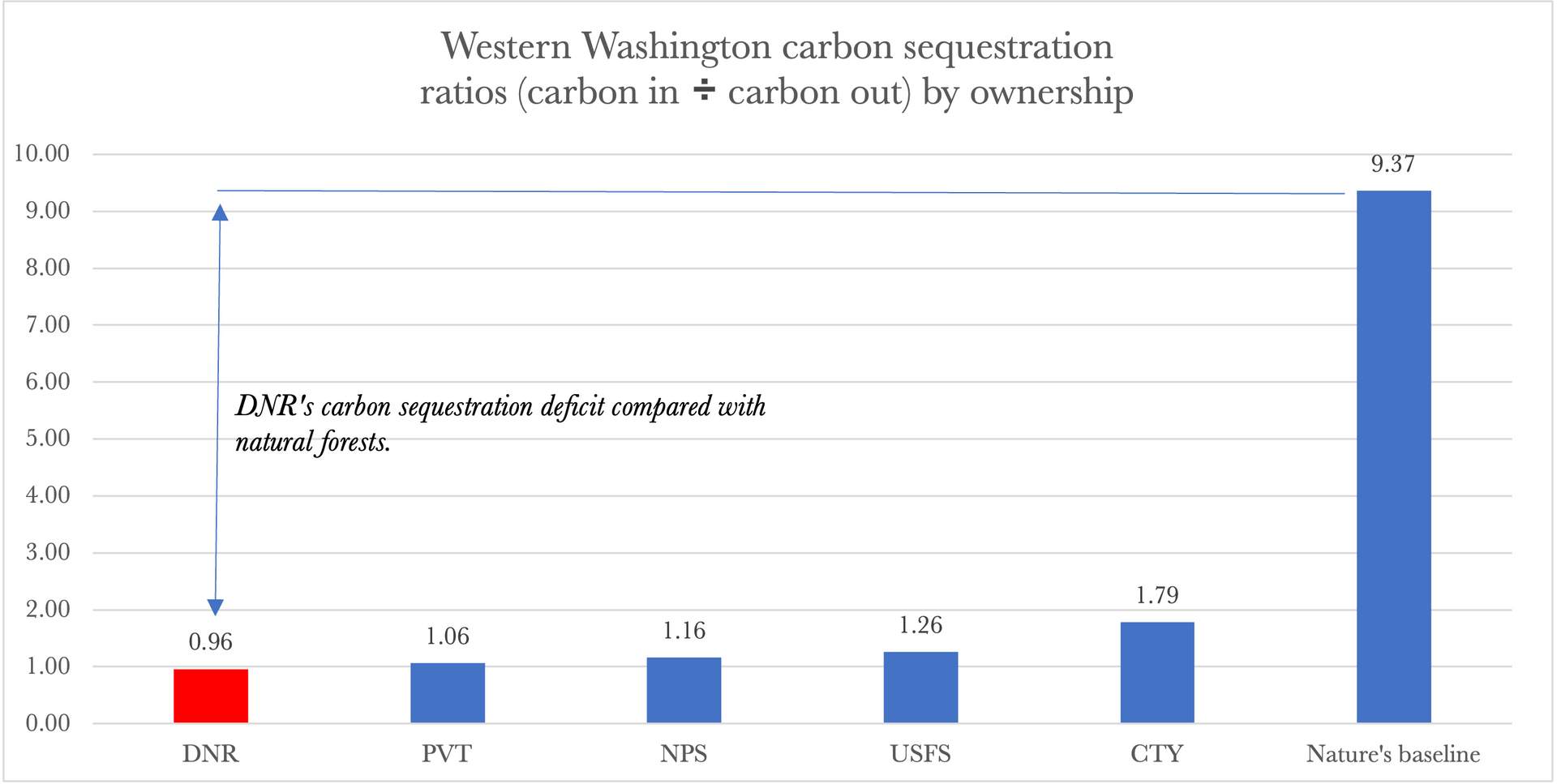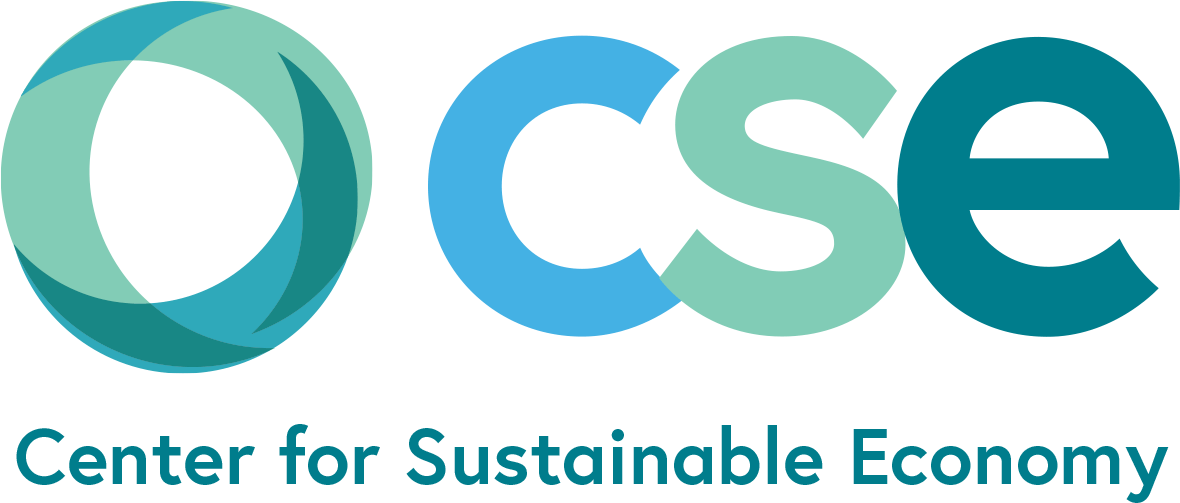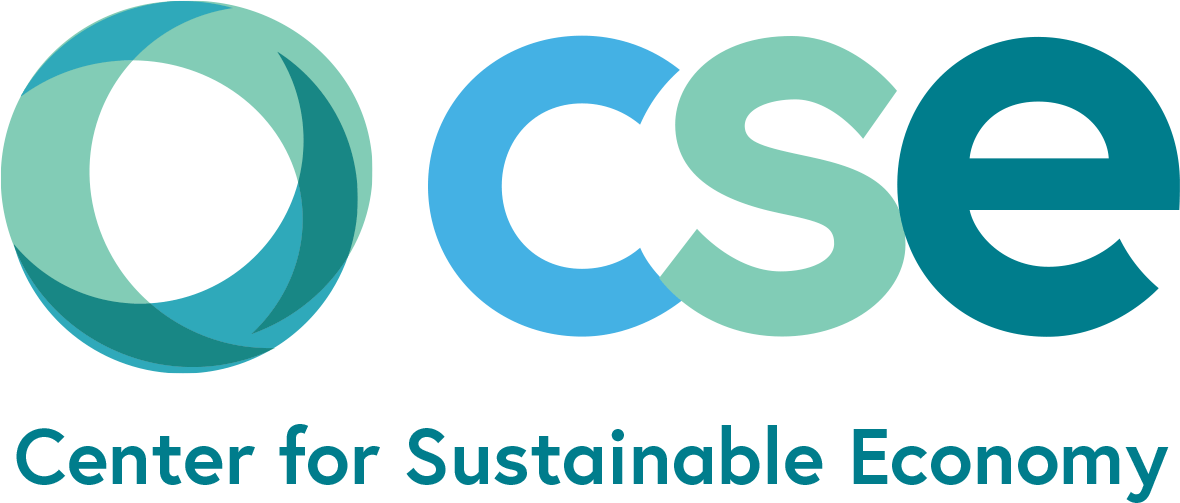Court Halts Logging Over Climate Impacts
March 28, 2024
King County Superior Court rules that DNR violated SEPA by
failing to disclose and mitigate the climate impacts of logging mature 'legacy' forests

FOR IMMEDIATE RELEASE 28 MARCH, 2024
Contact:
- John Talberth, CSE, (510) 384-5724, jtalberth@sustainable-economy.org
- Claudia Newman, Bricklin and Newman, (206) 264-8000, newman@bnd-law.com
Seattle – For the second time in two years a Washington Superior Court has ruled that the Department of Natural Resources, under Hilary Franz’s leadership, is violating the State Environmental Policy Act (SEPA) by deforesting the last remnants of mature natural forest cover on its lands and failing to disclose or mitigate the harmful climate impacts of doing so. Despite losing on this issue in Jefferson County, DNR refused to make any substantive changes to its logging program or environmental analysis procedures under SEPA. In this latest round, Center for Sustainable Economy, Save the Olympic Peninsula, and Legacy Forest Defense Coalition filed a lawsuit in King County Superior Court last June to halt the Wishbone Timber Sale – a 100-acre patch of carbon rich 80- to 110-year-old ‘legacy’ forests in the Tolt and Snoqualmie River basins northeast of Seattle. Legacy forests are rare, naturally regenerated stands that provide exceptional levels of carbon storage, biodiversity, and water quality. Led by Dave Upthegrove, currently running for Commissioner of Public Lands, seven members of the King County Council sent a letter to DNR supporting plaintiffs in asking for accounting of climate impacts associated with this kind of logging.
In today’s ruling in Center for Sustainable Economy et al. vs. DNR (No. 23-2-11799-9-KNT), Judge Kristin Ballinger took DNR to task over its rationale for ignoring climate impacts of logging at the project level – that as a whole, DNR lands are capturing more carbon than is released by logging. In her Decision and Order, Judge Ballinger agreed with plaintiffs that “DNR cannot circumvent an examination of the impacts of logging on a specific parcel of land by relying on carbon sequestration benefits from other lands that it manages.” She said that by failing to consider the impacts of deforestation and forest degradation on climate, DNR’s determination that the Wishbone Timber Sale would have no significant environmental impacts was ‘clearly erroneous.’
According to Dr. John Talberth at Center for Sustainable Economy, "This is a major victory for carbon rich, biodiverse forests and the laws that protect them. To stabilize the Earth's climate, all such forests need lasting protection. But tragically, under Hilary Franz's leadership, DNR has been deforesting these stands to keep logging levels at an extremely unsustainable rate rather than setting the high bar on what climate smart forestry looks like."
In their litigation, plaintiffs repeatedly pointed out that DNR's mismanagement of the landscape has all but eliminated carbon sequestration capacity. According to the latest data from the US Forest Service, DNR lands in western Washington currently rank last place in terms of the ratio of carbon captured vs. carbon released by logging and mortality (chart below). Logging mature legacy forests is part of the reason. But now that two courts have found DNR in violation of SEPA by failing to disclose these facts, the agency is being compelled to find alternatives.

According to Claudia Newman, who litigated the case for plaintiffs, "Instead of facing the reality that logging century old, structurally complex forests and replacing them with early-stage tree plantations causes significant adverse climate impacts, DNR tried to convince the court that these actions have no climate consequences whatsoever. We are grateful to Judge Ballinger for recognizing reality and ordering the agency to consider employing climate-smart, sustainable forest management tools for future harvesting projects.”
DNR's position throughout this litigation mirrored timber industry tactics in the range of false and misleading claims made about climate change, its management activities, and plaintiffs' goals. In particular:
- DNR deception: Plaintiffs hold "extremist" views that are contrary to the international community.Truth: Plaintiffs are asking DNR to quantify the greenhouse gas emissions and other climate impacts associated with its deforestation activities and develop alternatives to lessen the impact. The international climate community is firmly supportive of efforts to curb deforestation and find alternatives - like partial cutting and preservation of primary forests - to prevent any further loss of forest cover and carbon dense stands.
- DNR deception: Our lands are capturing far more carbon than they release.Truth: The only comprehensive inventory of forest carbon stocks and fluxes across the landscape has found that DNR's lands are not accumulating carbon at all because so much is being lost by logging operations.
- DNR deception: Since our lands are capturing more carbon than they release there are no climate impacts from logging.Truth: Even if DNR lands were net positive on carbon accumulation, it does not mean that logging projects have no climate impacts. This is analogous to the Bureau of Ocean Energy Management saying that new oil platforms have no climate impacts because the ocean still absorbs more CO2 than is released by this new fossil fuel infrastructure. The reality is that since logging, as with drilling, is not part of nature's carbon cycle any emissions generated by these activities are helping to drive up CO2 concentrations in the atmosphere.
- DNR deception: We carefully considered the climate impacts of logging in programmatic documents from 2019 and so don't need to do anything further at the project level.Truth: Programmatic documents don't emit carbon, logging projects do, and SEPA requires consideration of actual, on-the-ground effects. Moreover, the 2019 documents considered only a small fraction of what might be emitted by its logging program and failed entirely to consider other climate impacts, such as increases in surface temperature caused by stripping forest cover.
- DNR deception: Storing carbon in wood products is better than storing it in forests.Truth: This ‘furniture’ theory has been thoroughly debunked. Each ton of carbon stored in wood products comes at a carbon cost of 20 or more tons CO2 released by logging, manufacturing, and disposal of wood products in landfills. There is no net carbon storage in wood products, just a net release of greenhouse gases into the atmosphere. In addition, forests can accumulate and store carbon for hundreds of years while most carbon stored in wood products is released into the atmosphere in a few decades.
- DNR deception: Through our standard practices, we are protecting fish, wildlife, water and forest productivity from climate change.Truth: By converting natural forests into tree plantations DNR is making state forestlands more susceptible to wildfire, drought, water shortages, heat waves, invasive species, flooding, landslides and other climate stressors.
#
For access to all pleadings filed in this case, please visit the Wishbone litigation project page here.


